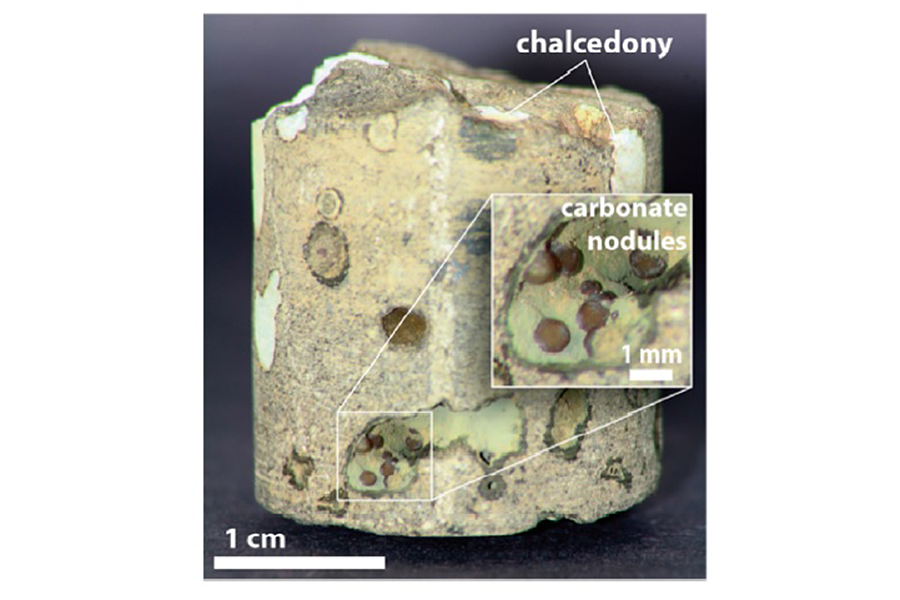Scientists turn CO2 into rock – again
Loading...
Scientists have done it again. They have turned carbon dioxide into stone.
It is possible to convert carbon dioxide into stone outside of the laboratory in just two years, the research team announced Friday, in a paper published in the journal Environmental Science and Technology Letters.
With carbon dioxide emissions sky-high and driving global climate change, researchers have been looking for ways to reduce the amount of that greenhouse gas that makes it into the atmosphere, and extract it out of the air once it's already there.
Carbon capture and storage (CCS) has been proposed as one possible technological mitigation strategy. The idea is to capture carbon dioxide directly from the power plants or other emission-sources and inject it into underground rock formations. Scientists had the idea that the carbon dioxide could react with the rock and turn to stone itself, thus becoming permanently trapped beneath the surface of the Earth rather than escaping into the atmosphere.
But there was one problem: in nature, this process takes thousands of years. Tests conducted in the lab were much speedier, but researchers weren't sure it could happen in a human lifetime in the real world.
So when a team of scientists announced in June that they had done it in under two years at a geological site in Iceland, it was a cause for celebration.
"This is a great step forward in proving the practicality of the process," Robert Zierenberg, a geology professor at the University of California, Davis, who was not involved in the research, told The Christian Science Monitor at the time. "People knew it would work but didn't know the timescale – whether it would be rapid enough to be useful … You need a large-scale project to prove that, and that's exactly what they've done."
And now, it has been done again. A different team of researchers working in the Columbia River Basalt formation in Washington state announced their own success on Friday.
In the Iceland project, 95 to 98 percent of the carbon dioxide had mineralized within two years after the researchers injected a slurry of carbon dioxide mixed with water into basaltic rock. The scientists working at the site in the United States injected pressurized liquid carbon dioxide into the basalt, and it, too, turned to stone (in the form of the carbonate mineral ankerite) within two years.
This success could mean that such a method of permanent carbon storage might be able to work on a commercial scale, the researchers concluded.








